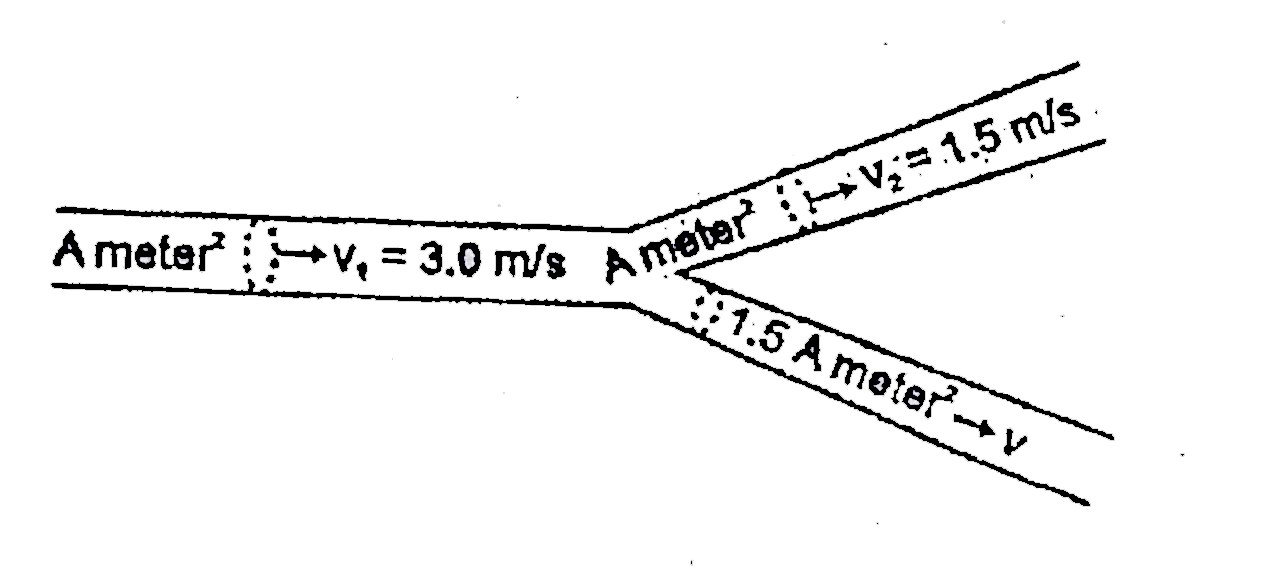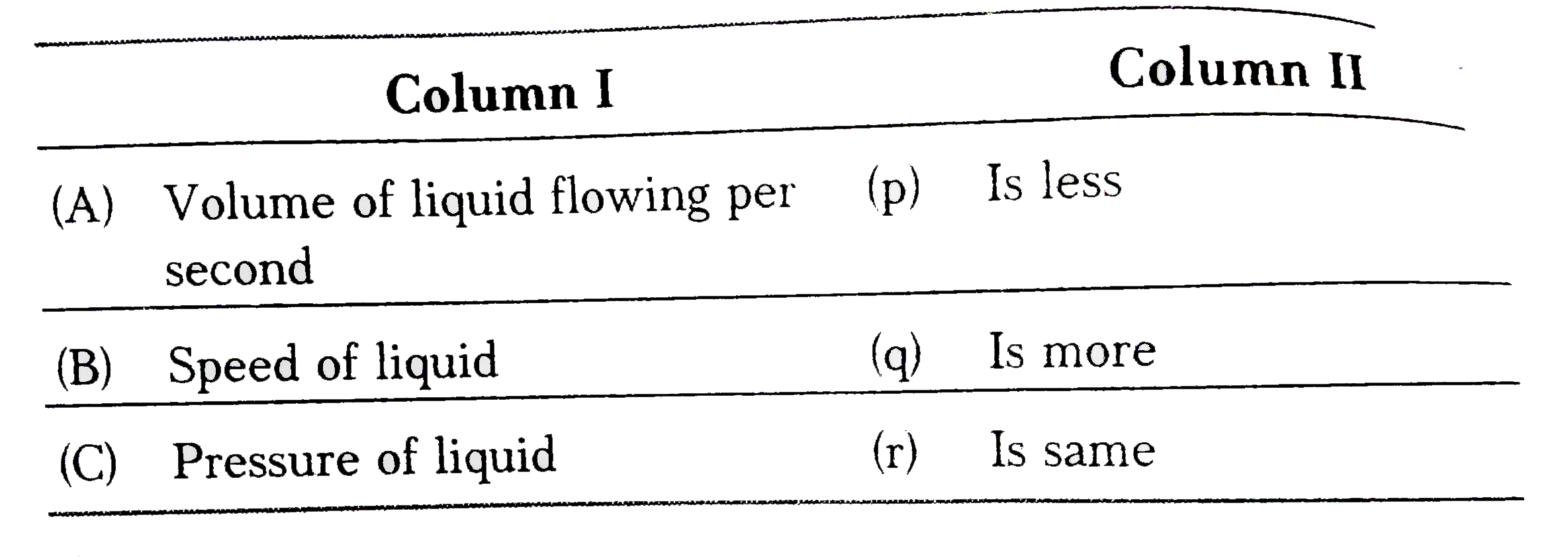An incompressible liquid flows through a uniform cross section tube with velocity 12 cm/s. the thickness of liquid layer is cm then velocity of gradient of flow is
The correct Answer is:A
To solve the problem of finding the velocity gradient of an incompressible liquid flowing through a uniform cross-section tube, we can follow these steps:
1. Identify Given Values:
- Velocity of the liquid, V=12cm/s
- Thickness of the liquid layer, y=0.8cm
2. Understand the Concept of Velocity Gradient:
- The velocity gradient (dVdy) is defined as the change in velocity (dV) over the change in distance (dy). In this case, it represents how the velocity of the liquid changes with respect to the thickness of the liquid layer.
3. Set Up the Formula for Velocity Gradient:
- The formula for velocity gradient is given by:
Velocity Gradient=dVdy
- Here, dV is the change in velocity, which is equal to the maximum velocity V since the velocity at the wall of the tube is zero (the liquid is stationary at the wall).
4. Calculate the Velocity Gradient:
- Substitute the values into the formula:
dVdy=Vy=12cm/s0.8cm
- Perform the division:
dVdy=120.8=15cm/s/cm
5. Final Result:
- The velocity gradient of the liquid flow is:
dVdy=15cm/s/cm
- Velocity of the liquid, V=12cm/s
- Thickness of the liquid layer, y=0.8cm
- The velocity gradient (dVdy) is defined as the change in velocity (dV) over the change in distance (dy). In this case, it represents how the velocity of the liquid changes with respect to the thickness of the liquid layer.
- The formula for velocity gradient is given by:
Velocity Gradient=dVdy
- Here, dV is the change in velocity, which is equal to the maximum velocity V since the velocity at the wall of the tube is zero (the liquid is stationary at the wall).
- Substitute the values into the formula:
dVdy=Vy=12cm/s0.8cm
- Perform the division:
dVdy=120.8=15cm/s/cm
- The velocity gradient of the liquid flow is:
dVdy=15cm/s/cm
Topper's Solved these Questions
- FRICTION IS SOLIDS AND LIQUIDS Book:TARGET PUBLICATIONChapter:FRICTION IS SOLIDS AND LIQUIDS Exercise:MCQ (CRITICAL THINKING)
Explore 68 Videos
- FRICTION IS SOLIDS AND LIQUIDS Book:TARGET PUBLICATIONChapter:FRICTION IS SOLIDS AND LIQUIDS Exercise:MCQ (COMPETITIVE THINKING)
Explore 97 Videos
- FORCE Book:TARGET PUBLICATIONChapter:FORCE Exercise:Evaluation Test
Explore 16 Videos
- MAGNETIC EFFECT OF ELECTRIC CURRENT Book:TARGET PUBLICATIONChapter:MAGNETIC EFFECT OF ELECTRIC CURRENT Exercise:Evaluation Test
Explore 12 Videos
Similar Questions
An ideal fluid flows through a pipe of circular cross section with diameters 5 cm and 10 cm as shown. The ratio of velocities of fluid at A and B is

View SolutionA liquid flows through a horizontal pipe of varying cross section at a rate of 10 litres per minute. Find the velocity of liquid at a point where radius of pipe is 5 cm.
View Solution
Knowledge Check
An incompressible liquid flows through a horizontal tube as shown in the figure. Then the velocity 'v' of the fluid is:
 A3.0 m/sB1.5 m/sC1.0 m/sD2.25 m/s
A3.0 m/sB1.5 m/sC1.0 m/sD2.25 m/sThe velocity gradient of certain liquid is 5s−1. If thickness of liquid layer is 2.5 cm, then velocity of flow of liquid will be
A10 cm/sB2.5 cm/sC12.5 cm/sD5 cm/s
An incompressible liquid flows through a horizontal tube LMN as shown in the figure. Then the velocity V of the liquid throught he tube N is:A1ms−1B2ms−1C4.5ms−1D6ms−1
A liquid is flowing through a horizontal pipe line of varying cross - section .At a certin point the diameter of the pipe is 6cm and the velocityof flow of liquid is2.0cms−1 Calculate the velocity of flow at another point where the diameter is 1.5 cm.
View SolutionA liquid is flowing through a pipe of non-uniform cross-section. At a point where area of cross-section of the pipe is less, match the following columns.

View SolutionIn streamline flow of liquid through a pipe of uniform cross sectional area, all stremlines are
View SolutionWhen a steady current flows through a metal conductor of non-uniform cross-section , then drift velocity is
View SolutionFigure shows an ideal fluid flowing through a uniform cross-sectional tube in the vertical tube with liquid velocities vA and vB and pressure PA and PB. Knowing that offers no resistance to fluid flow then which of the following is true.

View Solution

